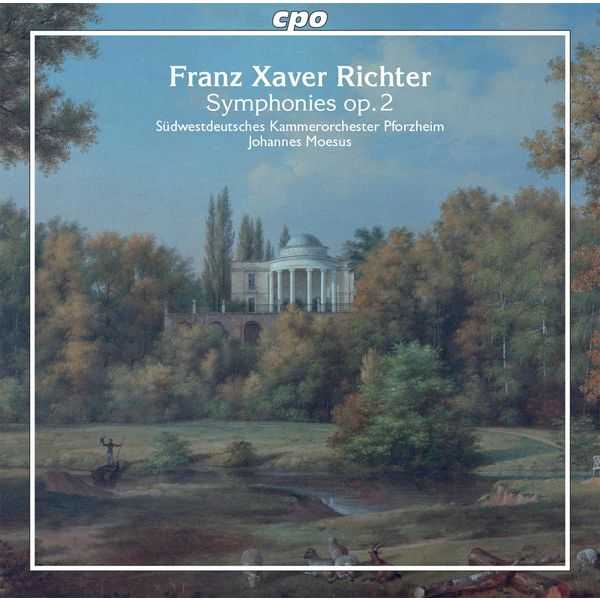

Composer: Franz Xaver Richter
Orchestra: Südwestdeutsches Kammerorchester Pforzheim
Conductor: Johannes Moesus
Format: FLAC (tracks)
Label: CPO
Catalogue: 7779912
Release: 2022
Size: 1.11 GB
Recovery: +3%
Scan: yes
Symphony in D Major, Op. 2 No. 1
01. I. Allegro spiritoso
02. II. Andantino grazioso
03. III. Presto
Symphony in F Major, Op. 2 No. 2
04. I. Adagio con brio
05. II. Andantino affettuoso
06. III. Presto
Symphony in C Major, Op. 2 No. 3
07. I. Allegro con spirito
08. II. Andantino
09. III. Presto ma non tanto
Symphony in E-Flat Major, Op. 2 No. 4
10. I. Allegro maestoso
11. II. Andante grazioso
12. III. Menuetto – Trio – Menuetto da capo
Symphony in G Major, Op. 2 No. 5
13. I. Allegro con brio
14. II. Andantino
15. III. Vivace
Symphony in D Major, Op. 2 No. 6
16. I. Allegro spiritoso
17. II. Andantino grazioso
18. III. Presto
Franz Xaver Richter shares the honors with Johann Stamitz as one of the founding figures of the Mannheim school and the famous court orchestra of Prince Elector Carl Theodor of the Palatinate. Richter joined this renowned ensemble in 1747, serving as a composer, violinist, and bassist. His works combine Baroque stylistic features with elements of the style galant, and he numbered among the masters of the Mannheim school who made very important contributions to the beginnings of the early classical symphony.
While Johann Stamitz, Ignaz Holzbauer, and Anton Fils, drawing on ideas of Italian provenance, shaped the new musical language of what came to be known as the Mannheim school, Richter’s own comparatively conservative view of music was an obstacle to his advancement.
His collection of Six Symphonies Op. 2 dedicated to Prince Elector Carl Theodor was printed by the publisher Johann Julius Hummel in Amsterdam in 1759. All six symphonies have three movements, and in these works Richter generally adhered to the model established by the opera sinfonia. Only the fourth symphony in this collection forms an exception in that Richter has a minuet with a trio in the last position instead of a presto.
Despite some backward-looking tendencies, Richter was not at all an enemy of progress – but just the opposite: he was the first “Mannheimer” to publish string quartets. This recording of the symphonies is based on the editions prepared at the research center for the study of Southwest German court music at the Heidelberg Academy of Sciences.